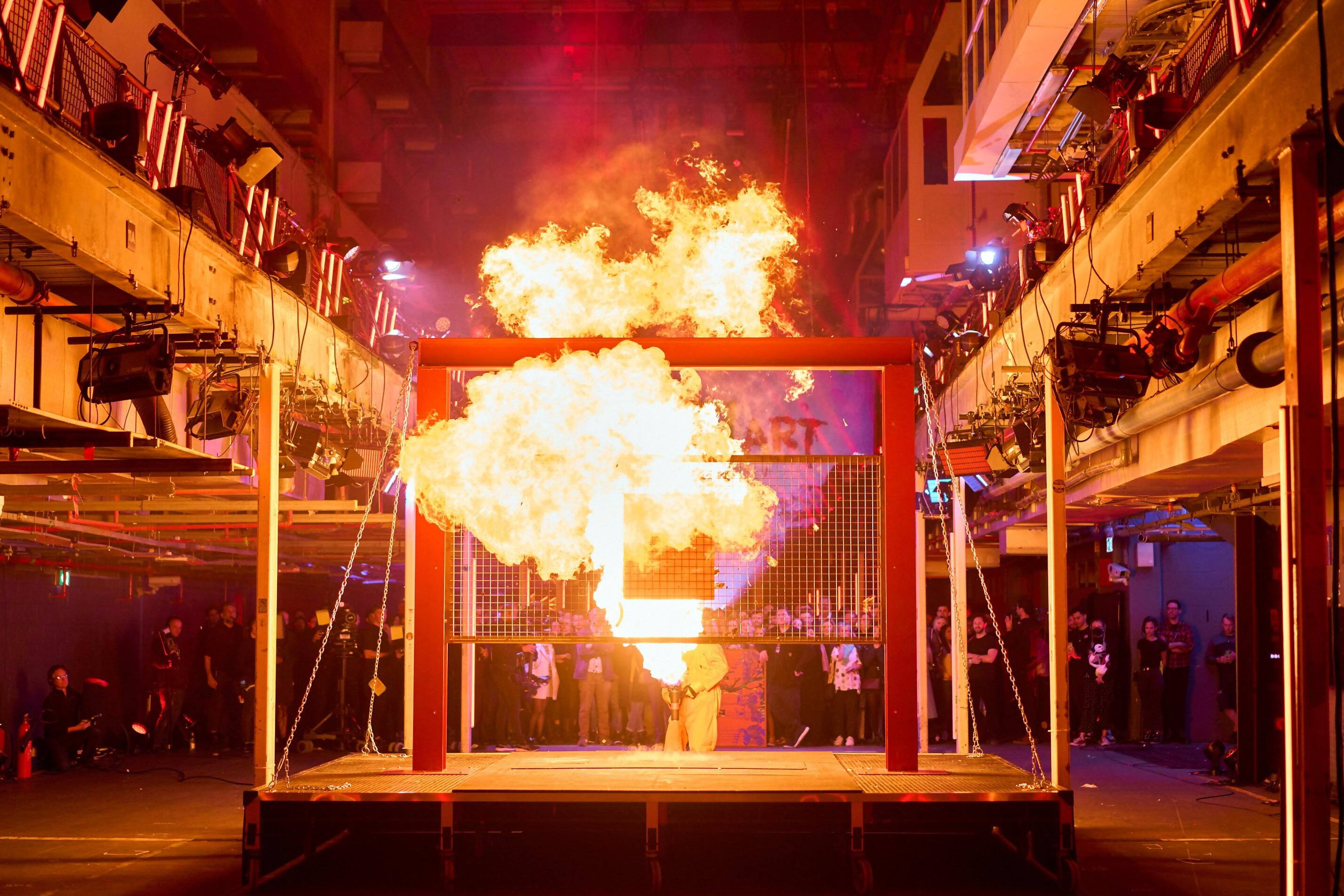
★★☆☆☆
Last night Channel 4 broadcasted Jimmy Carr Destroys Art, taking cancel culture to new heights. Carr hosted brief debates between defenders or critics of art in the show before the studio audience voted on which works to destroy or save. With the need to provide spectacle, some art had to meet a violent end. Using clips of Banksy and Damien Hirst destroying their art in performances and a mob of attackers toppling the Colston statue into the river in Bristol, the producers framed iconoclasm as a valid form of participatory activity. Channel 4, like Just Stop Oil, is tapping into the zeitgeist.
Insultingly low quality
Works on trial were by paedophiles Rolf Harris and Eric Gill, race-grifter Rachel Dolezal, woman-abuser Pablo Picasso (“if Picasso were prosecuted today for the crimes he now accused of, he would be looking at 50 years in prison”) and “genocidal maniac” Adolf Hitler. Other controversial pieces were a cartoon of 1856 blaming slaves for strife in the USA that would erupt in a civil war and a print of Marcus Harvey’s painting of serial killer Myra Hindley. The show’s producers had purchased the pieces.

Image Credit: Channel 4
The artworks were not especially valuable, but some were unique. Although some speakers – including Janet Street-Porter, Dom Joly, Dane Baptiste and Nina Power – discussed qualities of the art, the focus was on the personal failings of creators. The debates (admittedly shortened for broadcast) were of insultingly low quality. Joly described the Harris landscape painting as “shite”. “This is quite a shit painting,” Baptiste said of Hitler’s watercolour of a church.
The show format meant that one piece had to be destroyed dramatically. A flamethrower burned Gill’s prints of nude figures with a flamethrower, and Dolezal’s ceramic head was dropped from a height. The Hindley print was shot with paint guns. As the studio audience watched, Hitler’s painting was fed through a row of chainsaws.
Retributive vengeance
However weak, flawed, evil or unfashionable, the artists – and we must remember that every person (including us) is the product of our era and culture – Carr limited the discussion to personal views and topical concerns. In this adversarial format, no one could criticise the idea of retributive vengeance. Why should culture be arbitrated by those who know little and make nothing of value? The show projected an underlying air of resentment. Why should any of these flawed figures achieve the recognition denied to you, the audience member?
Everything was reduced to a consequentialist balance: at what point does the good of the art outweigh the bad of the creator? Inflexible resistance was not welcome. A genuinely provocative issue would have been that the general public should never have a role in permitting what art should survive.
It is possible to have an informed and measured analysis of why we venerate iconic creators without destroying their art. Jimmy Carr Destroys Art was not that. It was a wretched viewing experience that worryingly reaffirmed the validity of today’s wave of iconoclasm.





1 Comment
Is Jimmy Carr’s comedy is considered as art so can we destroy it PERMANANTLY